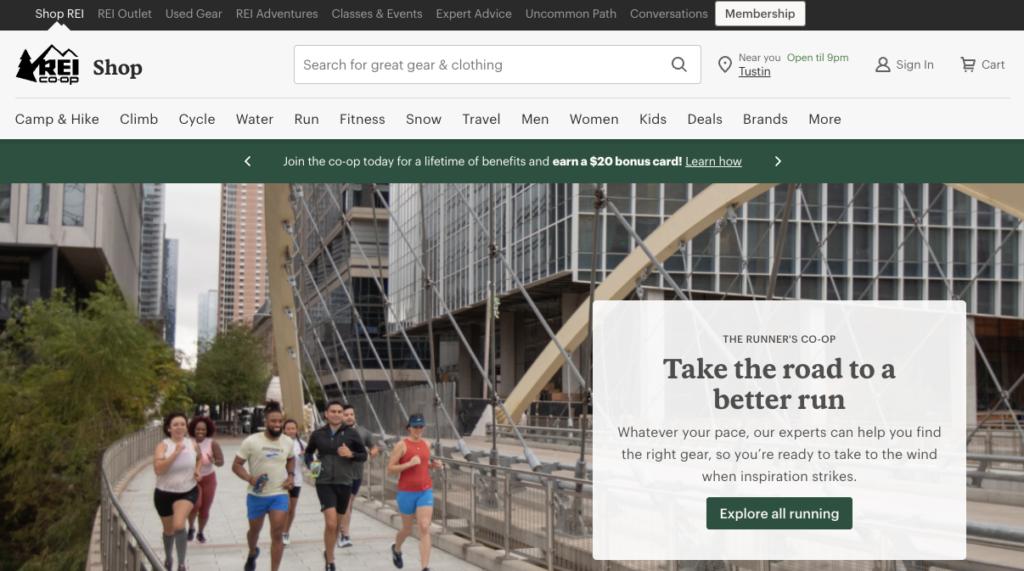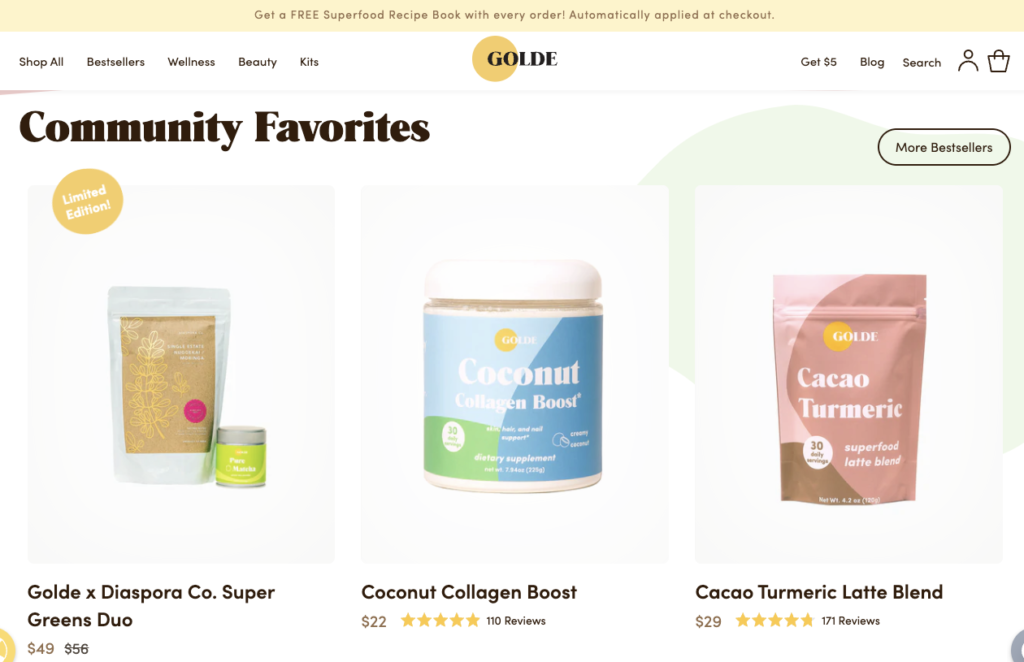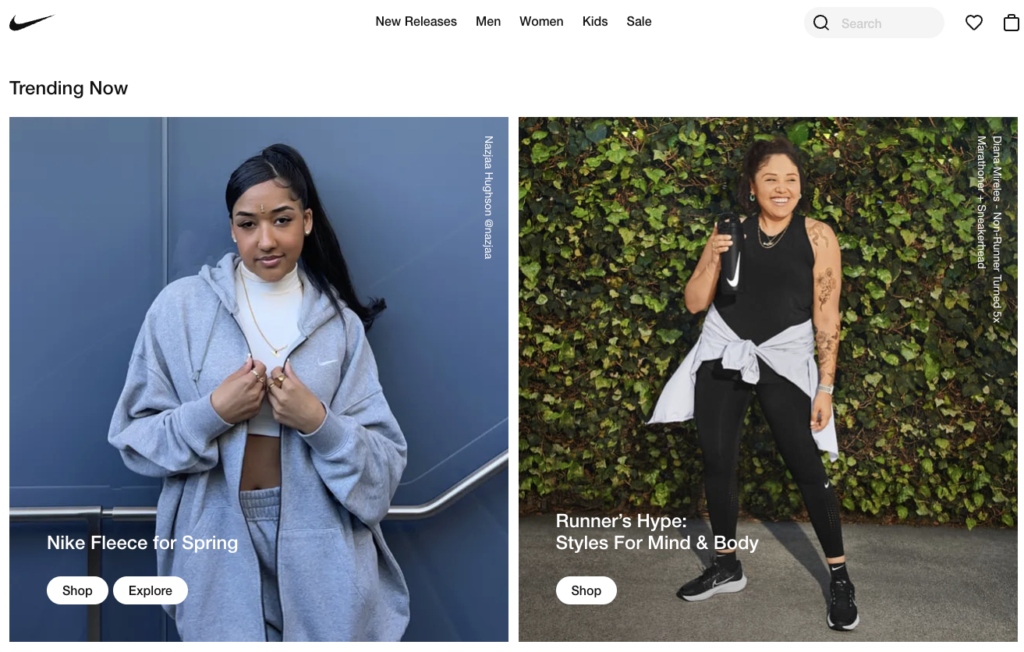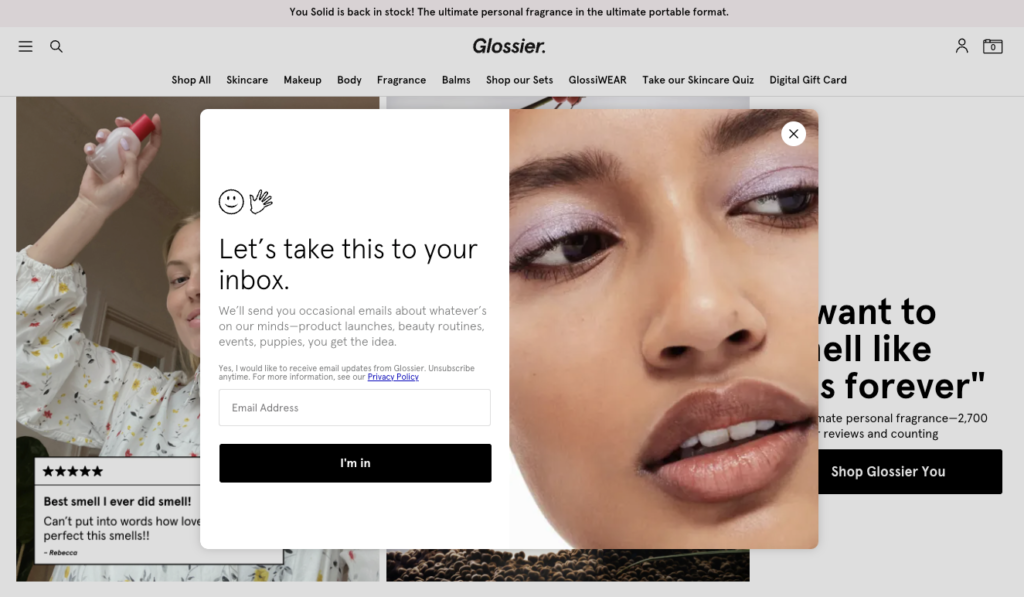When it comes to conversions, a well-designed eCommerce homepage can make a world of difference. Follow these ten tips to craft the best eCommerce homepage possible.
Sections
1. Put the most important elements above-the-fold.
Above-the-fold refers to the space that appears when a person first loads your website, before they have to scroll down. By including your most important elements in this space, you increase your chances of piquing their interest and getting them to stick around and browse your products. This space should include your:
- Logo
- Navigation
- Search bar
- Shopping cart and account icons
- Call to action
- Current offers, sales, or promotions
Can you spot these elements in REI’s homepage?

2. Show off your best-sellers.
Why not put your best foot forward? Feature your best-selling products and product categories on your home page. Be sure to use professional product photography that puts your products in their best light and makes people excited to purchase with you.
Here’s an example from Golde:

3. Make it mobile-friendly.
With mobile representing 65% of all eCommerce website traffic, people are more likely to visit your eCommerce store from their smartphone or tablet. It is essential that your website be easy and enjoyable for them to use on the small screen. Leverage a simple design with plenty of white space that allows your CTA buttons to stand out.
4. Make it personal.
Once you have returning visitors, you can increase AOVs by adding a section with personalized product recommendations to your homepage. Various eCommerce apps can help you personalize this section for your return visitors based on their previous purchasing or browsing history.
5. Include social proof.
People trust experts and influencers. Use that to your advantage by featuring plenty of social proof on your eCommerce home page. You can include icons for the publications and media outlets that have featured your products, as well as customer reviews and any awards your products have won.
Also consider adding a social media gallery that features photos of your products from influencers, like Nike does:

6. Build trust.
Before people hand their credit card information over to you at checkout, they need to feel like they can trust you with it. Use a SSL certificate for your website (most eCommerce platforms include this by default) and list security icons in your footer, along with the payment methods you accept.
7. Use banners wisely.
You don’t want to overwhelm your visitors, but you do want to make them more likely to convert. So, limit your banners to one or two. You can place one at the top of your website to feature current promo codes or free shipping offers.
You can also use a pop-up to encourage people to join your mailing list for an instant discount, like Glossier does:

8. Don’t forget SEO.
What good is an eCommerce homepage if no one can find it? Improve your site’s visibility in the search engines by taking care of the SEO basics like:
- Title tag
- Meta description
- Image meta data
- Product schema
Include keywords strategically throughout the page and optimize every page for fast-loading, on both mobile and desktop devices.
9. Test your homepage.
When crafting an eCommerce homepage, marketing and design experts recommend thinking like your visitors. But that’s easier said than done — especially when you’ve been pouring your heart and soul into launching your eCommerce store.
So, ask people in your target audience (or some family and friends) to take a look at your homepage. Encourage them to go through the process of adding a product to their cart. This will help you identify gaps in your homepage.
10. Always be improving.
Finally, the best eCommerce homepages stay the best because the marketers behind them are constantly analyzing and improving them. Keep an eye on your website analytics and user data to see which elements are resonating with users, and which aren’t. Make it a regular part of your process to review your homepage data for optimization opportunities.
Want help designing an eCommerce experience that sells? Talk to Your Marketing People.







